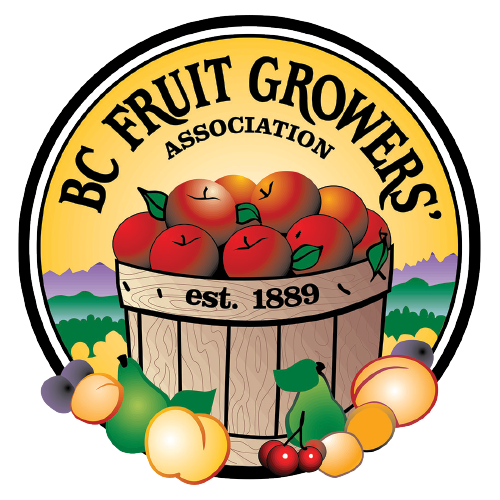Marketing Okanagan Fruit
As commercial production of fruit in the Okanagan was established in the 1890s, growers found they could no longer dispose of their crops by selling fruit directly to local customers. In the early 1890s farmers at Okanagan Mission fed their hogs on peaches because there was no way to bring the fruit to market. The first cooperative organizations were formed not to compete with established shippers and dealers, but because of the lack of them.

A group of farmers in the Kelowna area got together in the fall of 1893 to cooperate in selling fruit, vegetables, and other farm produce to the new mining towns of the Kootenays. Their efforts were sufficiently successful to encourage formal organization as a cooperative society, the Kelowna Shippers’ Union, in 1895, which was replaced by a limited company of the same name in 1896.
As the quantity of fruit grew, however, commercial shippers came into the business. Smallscale direct sales dwindled as shippers began to exploit distant markets, such as the Prairies, which were only economically feasible with bulk shipments at lower freight rates. The first full railcar load of fruit was shipped to the Prairies in 1901 by the private company of Stirling and Pitcairn, which had taken over the business of the Kelowna Shippers’ Union. In 1903 the same company sent a trial lot of two carloads to Britain, made up of Spys, Baldwins, Ontarios, and Canada Reds.5
Vignette: To Dwarf or not to Dwarf?
Much has been said lately about dwarf [rootstocks] … which will naturally keep the tree in a more dwarf form, fruit immediately, often in the second year after grafting, and the individual fruit is of superior size, color, and quality. … These trees … can be planted quite close together, say from six to ten feet apart according to sorts, yield immediately and heavy crops of finest fruits. … The larger outlay will repay doubtlessly by quick and increased returns very well.
All of this sounds familiar, doesn’t it? Obviously something out of the recent past, the Fifties or early Sixties when the industry was switching over to high-density plantings.
But the above quotation is from the VictoriaDaily Colonist of December 3, 1896. Dwarf trees were somewhat of a hot issue in the 1890s. Growers were looking at pears on quince, and apples on Paradise rootstocks. Dwarf apples were discussed at the B.C.F.G.A. convention in 1892, with growers reporting mixed results.
As far back as the sixteenth century in France, horticulturists used the Paradise strains of apple as rootstocks to create dwarfed trees with a fruiting variety grafted on. There was great interest in dwarfs in eastern North America between 1835 and 1860; then interest dwindled. Renewed interest appeared in the 1890s as a result of the explosion of the San Jose scale. At that time there was no known control except putting an airtight covering over the tree and fumigating with hydrogen cyanide gas. Such operations were almost impossible on a large tree, so interest in the old Paradise rootstocks re-emerged. But once other methods of controlling San Jose scale, such as lime-sulphur and oil sprays, were found after the turn of the century, dwarfs were again abandoned.
Early dwarfs failed to live up to their promise for two basic reasons. The first was that growers and nurserymen failed to realize that there was not one but many strains of the Paradise rootstock, some of which were not even dwarfing. In 1913 the East Mailing Research Station in England started to sort out and grow pure stock of the various strains, thus producing the EM series of rootstocks still used today. Now a grower who planted dwarf trees could rely on them to perform predictably.

The second problem was that orchardists, accustomed to huge, widely-spaced trees and a low level of culture, could not adapt to the intensive attention that dwarfs in their expensive, closer plantings needed to be profitable. Curiously enough, what is reported to have been the first experiment with a true high density planting in Canada was not done with dwarfing rootstocks. This experiment was a test planting of 144 Wealthys on standard stock, 10 x 10 feet, at the Central Experimental Station at Ottawa in 1896. By 1902, as six year olds, the block produced at the rate of nearly 400 bushels per acre, very high for the day, but the experts decided that the culture was not suitable for the ordinary farmer, and the idea of high density planting lapsed until after the Second World War.







